Time is getting short in Cornwall and there are still places on our list that we want to see. Among the most important are the tin mines along the northern coast of the peninsula. The
tin mines along the Cornish coast are an important historical aspect of Cornwall and, of course, a major plot theme in Poldark. Mining has been "the" thing in Cornwall since the Bronze Age (tin and copper both being necessary for bronze and Cornwall having an abundance of both). Other minerals present in lesser quantities, like arsenic and phosphorus, were also mined. In fact, in the 1700s Cornwall was the mining center of the world. First copper mining was the leader, and after other cheaper world sources for it arose in the mid-1800s, tin became the focus. The tin was
deeper and more dangerous to mine, but despite this it continued to be mined until the 1890s when many mines closed. Almost all were shut down by the 1920s.
It was a dangerous profession as, at its worst, the average age of death for miners was 25. An estimated 25% of the Cornish population worked in the mining industry, men below-ground and women and children "at grass" sorting and processing aboveground. Below-ground dangers included rockfall, suffocation, injury from equipment, and drowning. Not only was there water in mining shafts that had to be pumped out, but adjacent shafts filled
with water could break through. Also, some mines had shafts that ran out over a mile under the sea bed. Working under these conditions, Cornish miners were renowned for their skills and as the work opportunities diminished, many left to ply their skills around the world in places like Australia and the United States. Innovative mining equipment developed here was sent all over the world. Truly an impressive history, and high on our must-see list.
So, with a forecast that seemed to discount the possibility of rain, today seemed like a good time for a walk along the Coastal Path that threads through the areas containing historic
ruins from the tin mining era. Well, there was some mention of winds but how bad could that be. The drive started along similar roads as our trip to Mullion but diverged after a while to head to the southwestern talon of the Cornwall peninsula rather than the southeastern one. Sheila, our GPS, did not put us on any unnecessary goat roads although at one point she did send us on a shortcut that resulted consecutively in first a "do not enter" sign in our lane on the chosen road and then, on her alternative route, a stone wall. We adjusted and did find our way to the National Trust parking lot just outside of Botallack, at the heart of the Cornish tin mining area. Our first clue that the walk might not be perfectly wonderful today was when we had a hard time
opening the car door because of the force of the wind. As we left the car and began to walk, the wind was blowing about 40 to 45 mph with higher gusts. We quickly found that it was hard to take a good picture with our phones in any direction except downwind due to the inability to keep them steady. In the future we might pay a bit more attention to the wind forecast.
Though the weather may not have been perfect, the setting was pretty darn close. The sky was often blue, and huge wind-driven waves were crashing on the rocky shores beneath us. We started by walking the trail down to the Crown engines, very dramatic remains of a couple of steam engine houses perched worrisomely on cliffs near the water. Tin mines at their heyday used steam engines to pump the constantly seeping water out of the mines and
winch ore out of the mine. Later they were also used to winch workers up and down the shafts, much faster than the ladders miners originally had to use. An engine house had a tall round chimney attached that expelled the steam and for ventilation in general. The Crowns engine houses would have been associated with mine shafts that ran out under the ocean floor. The Crowns engines are precariously perched and one wonders how much longer they will remain as intact as they are. Nonetheless, a beautiful setting. In fact, the entire Cornish countryside is dotted with these chimneys that look like towers, testament to how widespread the mining was at one time.
As we wound further along the trail we passed Wheal West Owles, which was used as the Poldark family mine in the series, perhaps because it is more intact than many. We passed several
other mine structures along the way, and ended up at Kenidjack Head huddled out of the wind against a ruin of some sort for lunch. A very acrobatic red-billed black bird windsurfed above and around us as we ate, which we later learned was the endangered Cornish Chough that is making something of a comeback here. With the wind at our backs for a change we turned back towards our starting point and stopped off for a small dessert at the café in The Count House. This building was the administrative headquarters for the mine. Afterward we found the arsenic processing area (a useful byproduct of the mining) and then hit the road home. We dropped
by a beach area near Penzance to see the offshore St. Michael's Mount, which is a mini-Mont St. Michel complete with a causeway approach walkable only at low tide. With today's wind, waves were crashing over the walk regardless of the tide level, but we were content with just the view anyway.

 Crown Mines, England, United Kingdom
Crown Mines, England, United Kingdom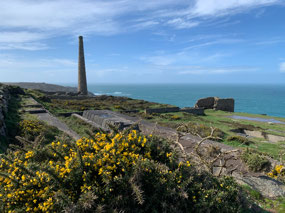
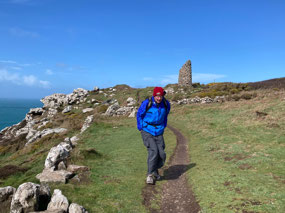
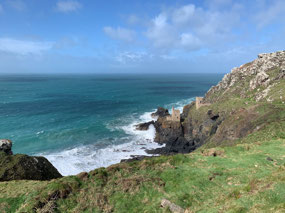
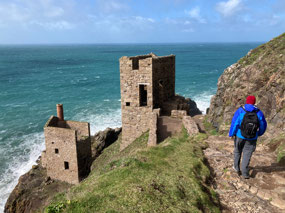
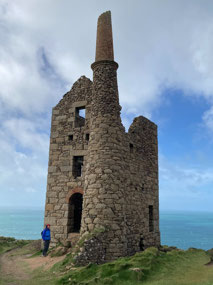
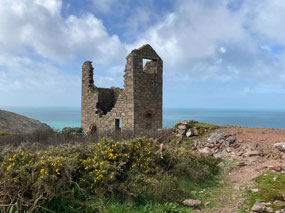
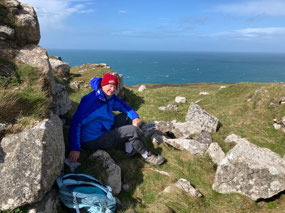
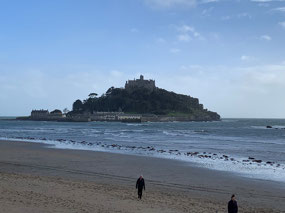



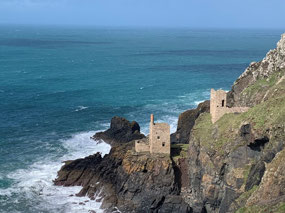

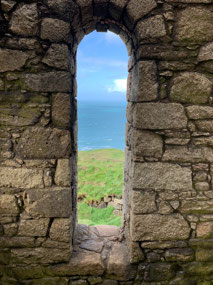
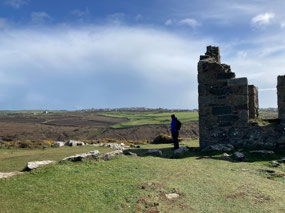

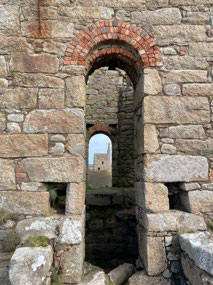
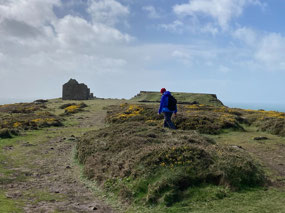
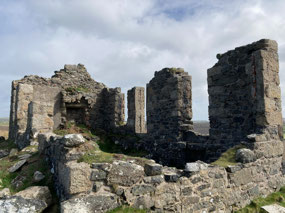

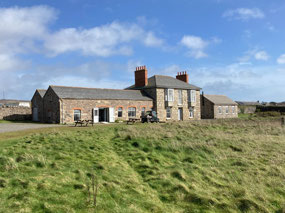
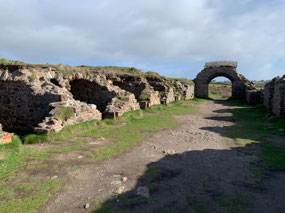
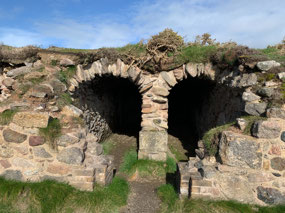
2025-05-22